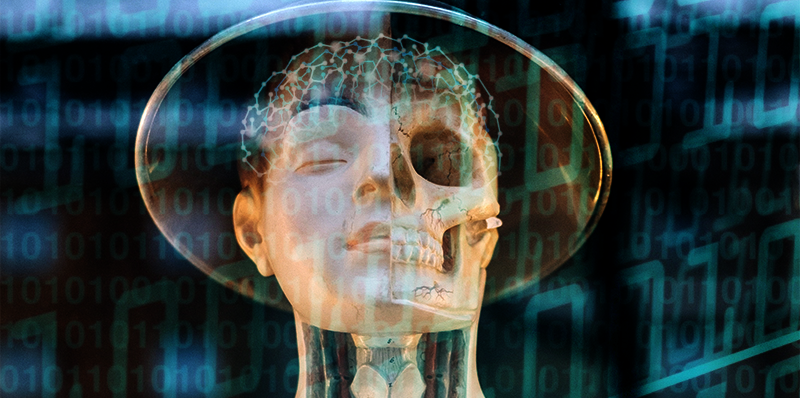Artificial intelligence is a concept that includes automatic or machine learning, so a first approximation to both terms places us already in a context of subordination that in no way implies inferiority.
Despite their specificities, both are artificial intelligence systems, and as such they pursue a single purpose: the creation of devices or algorithms that omit or replace human being by emulating their cognitive functions.
Basically, it’s about turning the machines into smarter devices to interact better with us. In this post we will see the approach and key applications that machine learning contributes as a distinctive element, against a general context of artificial intelligence that includes this and other areas.
Artificial intelligence research, indeed, focuses on many different fields, among them machine learning or, for example, deep learning , a new area of investigation of this one. In addition, recent years, it has advanced in a surprising way, acquiring a protagonism that seems to endow it with a fictitious autonomy.
Artificial intelligence
When establishing its coordinates in order to locate it in its place, as we have pointed out, we find that this place is none other than the wide field of artificial intelligence. Thus, the specificity of machine learning in relation to this would be one of the main differences between the two.
Again, we point out the importance of not confusing its pertain to artificial intelligence, as subfield, with its tremendous boom, acquired as a result of the strength recently experienced. In fact, machine learning is one of the most outstanding branches of artificial intelligence.
To such an extent it has gained an unusual force in the last years that to the one not versed in the matter it is often difficult to find differences between machine learning and artificial intelligence. On the other hand, far from being synonymous, there is no doubt that they have a close relationship and, of course, in many aspects concepts overlap.
If we consider the two meanings of artificial intelligence: applied and robust, only the first would fit into the concept of machine learning. That’s right, at least for now, since we will only reach the second when the machines can really be equated with humans.
That is, just when the cognitive abilities of machines and humans are interchangeable. A desideratum or perhaps a threat, the eternal debate, but in any case in the future.
So, only time will tell us if artificial intelligence will be part of the future, an extreme that experts do not think it can happen in the coming years. Definitely, artificial intelligence revolves around this previous period, whose goal is surrounded by uncertainty, and both machine learning and deep learning are included in this area.
Machine learning: Self-learning
Machine learning achieves the learning of the computers from the data that is introduced to him, as well as from the execution of algorithms. Specifically, it shares with other branches of artificial intelligence the use of algorithms, but with a focus on data aimed to “educate” the machinery to promote its autonomy.
Going back to the origins of machine learning means going back to the sixties. Specifically, we should mention as key the works of Vapnik y Chervonenkis, mathematicians who developed their theories away from the world of probability and statistics
Their proposals differed significantly from traditional statistics, because although machine learning focuses on how to find abstract objects as a probability, for example, it mainly does the operative part, which is, in the decision making of the data minimizing errors.
Therefore, automatic learning, differs from traditional concepts by this ability that algorithms grant to learn from the data. At this point, machine learning is part of artificial intelligence, since its development is based on the theory of computational learning.
But it also takes from other sources, as it also developed from the pattern recognition study, a science that deals with the processes of engineering, computation, and object-related mathematics. Its objective is to obtain information that allows to establish properties from among the sets of such objects.
The examples go beyond robotics, ranging from applications in science data within Big Data, up to, for example, fraud detection software, application in the medical sector and in many areas of research.
Nevertheless, there is still a long way to reach the goal. Today, “people are still much better at learning,” says Brenden Lake, a leading US researcher of worldwide reference that works in the field of machine learning.
One of his most recent works, accomplished with his team at the University of New York and published in the journal Science, is a qualitative advance in the everlasting challenge of equating the learning and creative capacity of machines to that of people.
Without being an important contribution, the study is an additional contribution, within a constantly increasing research area. On this occasion, beyond the learning of machines from hundreds or thousands of examples, the study managed to develop an algorithm capable of learning concepts from a single example.
In addition, this allows a very similar learning to humans, and can also recognize and draw letters and other characters or simple visual concepts. A small step that, added to many previous ones and, certainly, to future advances, is narrowing that gap that seems unbeatable between machine and human
Without falling into triumphalism, it is not an exaggeration to say that progress is constant in artificial intelligence, especially in machine learning. As José Cordeiro, a founding professor at Singularity University at NASA Research Park in Silicon Valley, California, concludes, works like Lake “demonstrates the fast advance that automatic learning undergoes” and opens up unimaginable perspectives.





